전시
관내 시설 2층
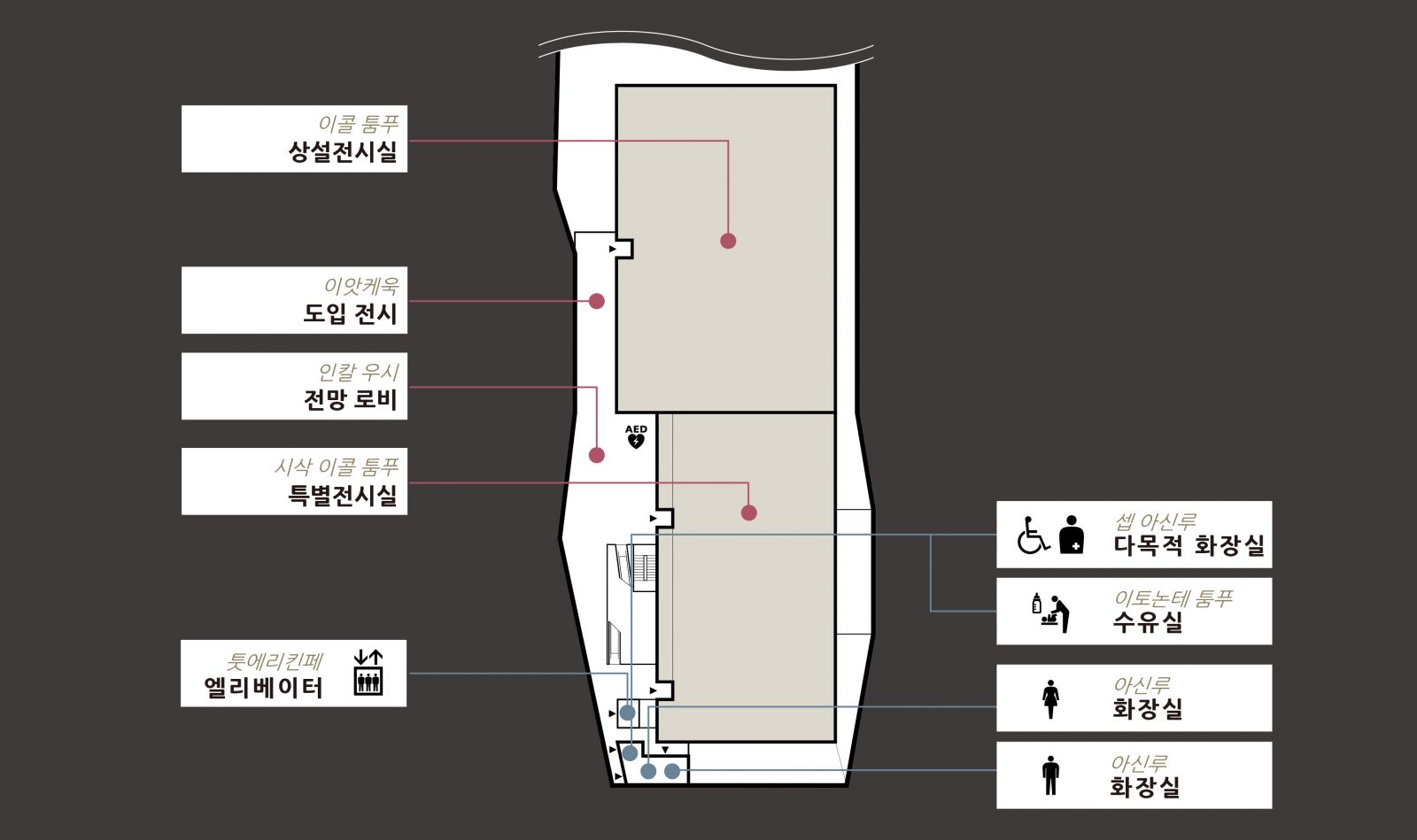
시삭 이콜 툰푸
특별전시실/2층
CHIRI MASHIHO: A Passion for the Ainu Language
- Release Date:
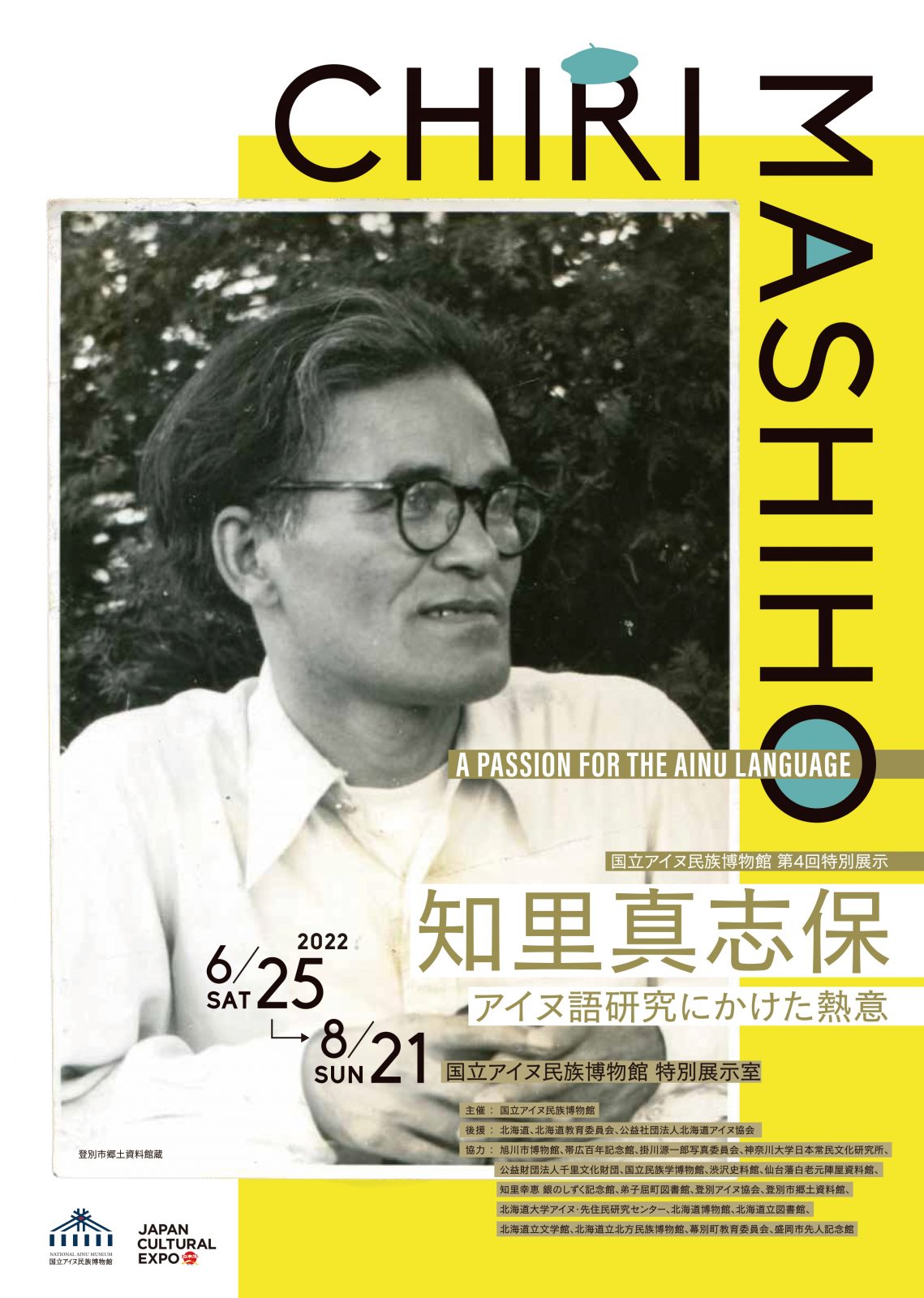
Outline of the exhibition
Chiri Mashiho (1909-1961) was a linguist and ethnologist born into a family descended from an Ainu leader. The younger brother of Chiri Yukie, the editor and translator of Ainu Shin’yōshū (translated into English as Ainu Spirits Singing), Chiri Mashiho’s works include A Classified Dictionary of the Ainu Language and An Ainu Language Place Name Dictionary. These works are based on his extensive collection of vocabulary across Hokkaido and Karafuto (Sakhalin). His work, to this day, is considered indispensable for Ainu language and Ainu cultural research. He also left behind many research papers on Ainu oral literature, and cultural history. Even 60 years after his death, he continues to have a wide-raging influence on linguistics, oral literature, ethnology, and historical research. This retrospective exhibition takes a look at the people he interacted with during his lifetime, and his research that continues to resonate today.
Overview
CHIRI MASHIHO: A Passion for the Ainu Language
【Dates】
June 25, 2022 (Sat)~August 21, 2022 (Sun)
※(The exhibition dates are subject to change due to COVID-19)
【Closed on】
Mondays (when Monday is a holiday, the museum will close on the next business day)
【Organized by】
National Ainu Museum
【Cooperation】
Hokkaido Government, Hokkaido Government Board of Education, and the Ainu Association of Hokkaido
【Collaboration】
Asahikawa City Museum, Obihiro Centennial City Museum, Kakegawa Genichiro Photo Committee, The Institute for the Study of Japanese Folk Culture, The Senri Foundation, National Museum of Ethnology, The Shibusawa Memorial Museum, Sendai Clan Shiraoi Manor House Museum, Chiri Yukie Memorial Museum, Teshikaga-cho Library, Ainu Association of Noboribetsu, Noboribetsu City Folk Museum, Center for Ainu & Indigenous Studies at Hokkaido University, Hokkaido Museum, Hokkaido Prefectural Library, Hokkaido Museum of Literature, Hokkaido Museum of Northern Peoples, Makubetsu Town Board of Education, Morioka Memorial Museum of Great Predecessors
Registration and Admission
To be admitted to the Special Exhibition you will need to designate the day and time of your visit online (Advance Registration). [Online Reservation is here]
- Admission reservations for both the Permanent Exhibition and Special Exhibition can be made together online.
- In order to be readmitted to the exhibition, you will need to reserve a new admission time.
- Admission reservations are accepted from 0:00am two days in advance to 30 minutes after the start of each admission time.
COVID-19 Countermeasures: The museum is working to prevent the spread of infection based upon the guidelines of the Japanese Association of Museums.
We are continuing the reservation system for designated visit dates and times, the wearing of face masks at all times, and thorough hand disinfection.
Also you will need to pay the Upopoy Admission Fee and the Special Exhibition Fee.
- Entry to the museum is included with admission to Upopoy.
- You can buy a Special Exhibition ticket separately inside of the museum.
| Special Exhibition Fees [tax included] | + | UPOPOY Admission Fees [tax included] | |
|---|---|---|---|
| Adults | 300 yen (240 yen) | + | 1,200 yen (960 yen) / One Year Pass 2,000 yen |
| High school students | 200 yen (160 yen) | + | 600 yen (480 yen) / One Year Pass 1,000 yen |
| Junior high school students and under | Free | + | Free |
- Prices in ( ) are group discounts for 20 people or more.
- Admission is free of charge for visitors with disabilities and one caregiver. Please present documentation upon entry.
Contents
- Born in Noboribetsu
- Student life in Tokyo and a determination to study the Ainu language
- Laying the foundations for Ainu language research with experts in Karafuto (Sakhalin) and Hokkaido
- Surveys across Hokkaido and dictionary editing
- Chiri Mashiho portrayed by his Utari – The passionate feelings of his fellow Ainu
- AYNU ITAK – Let’s study Ainu language with Professor Chiri! –
Chapter 1 Born in Noboribetsu
Chiri Mashiho was born on February 24 1909 in what is now the city of Noboribetsu. Many people in his family were highly skilled practitioners of Ainu oral literature and his elder sister, Chiri Yukie, recorded Ainu oral literature in the Latin alphabet. She is still widely admired today as the translator and editor of Ainu Shin’yōshū, a selection of Ainu oral literature translated into Japanese. Her aunt, Kannari Matsu, also recorded her Ainu language in the Latin alphabet and left behind notebooks of oral literature. For Mashiho, who later became a major scholar, his family and hometown can be said to be the original starting point of his research.
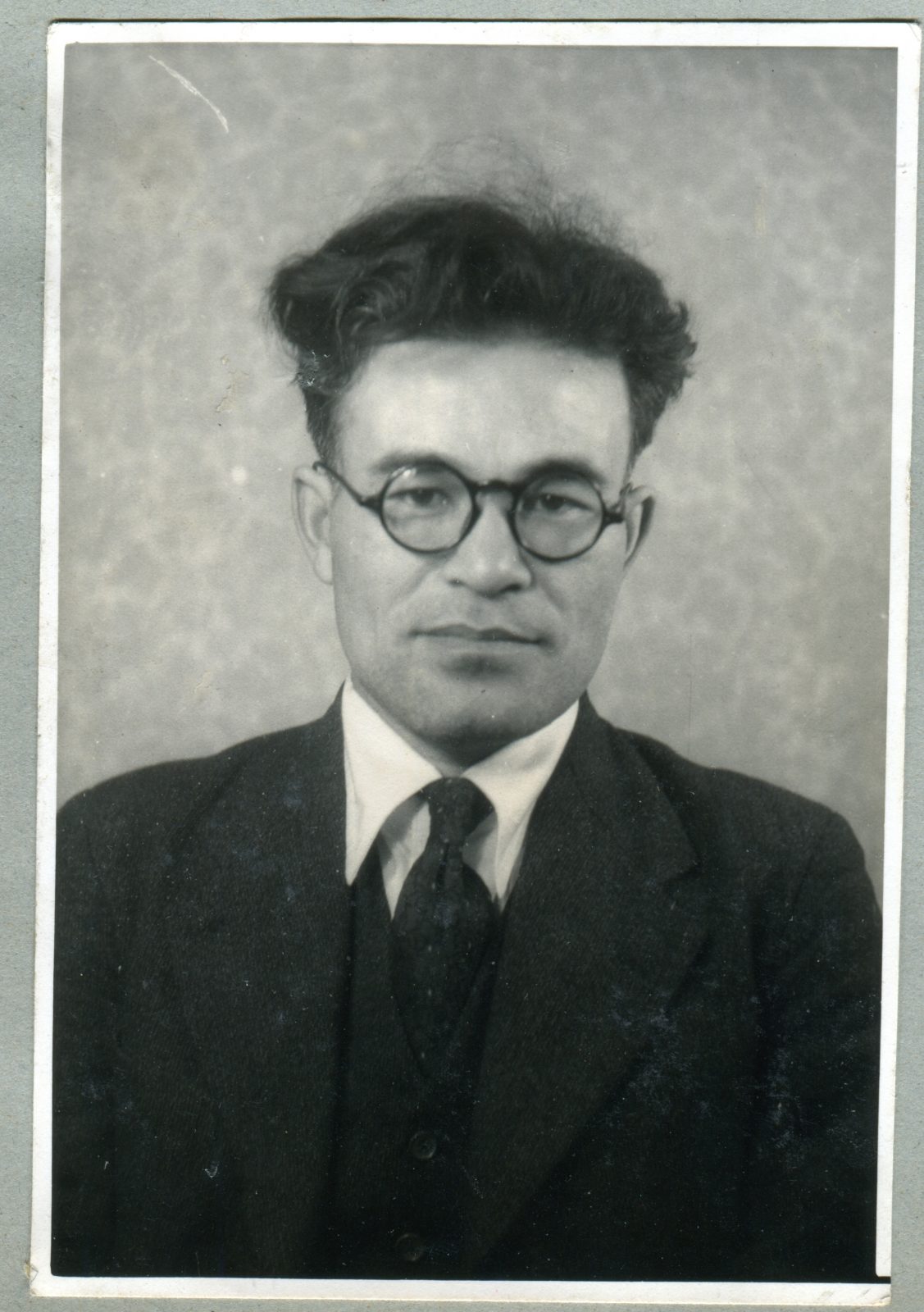
Noboribetsu City Historical Museum
Chapter 2 Student life in Tokyo and a determination to study the Ainu language
From 1930 to 1940, Chiri graduated from the Tokyo First Higher School, entered Tokyo Imperial University, and then proceeded on to the University’s Graduate School. He also worked at the Sanseidō publishing company while he was a student. Around this time, he began in earnest to work on Ainu language and culture research, focusing on that of his native Horobetsu. He began to collect tales and publish them in a variety of different magazines. Through his connections with folklore researchers, he became strongly aware of the importance of studying Ainu culture from the Ainu’s own perspectives.
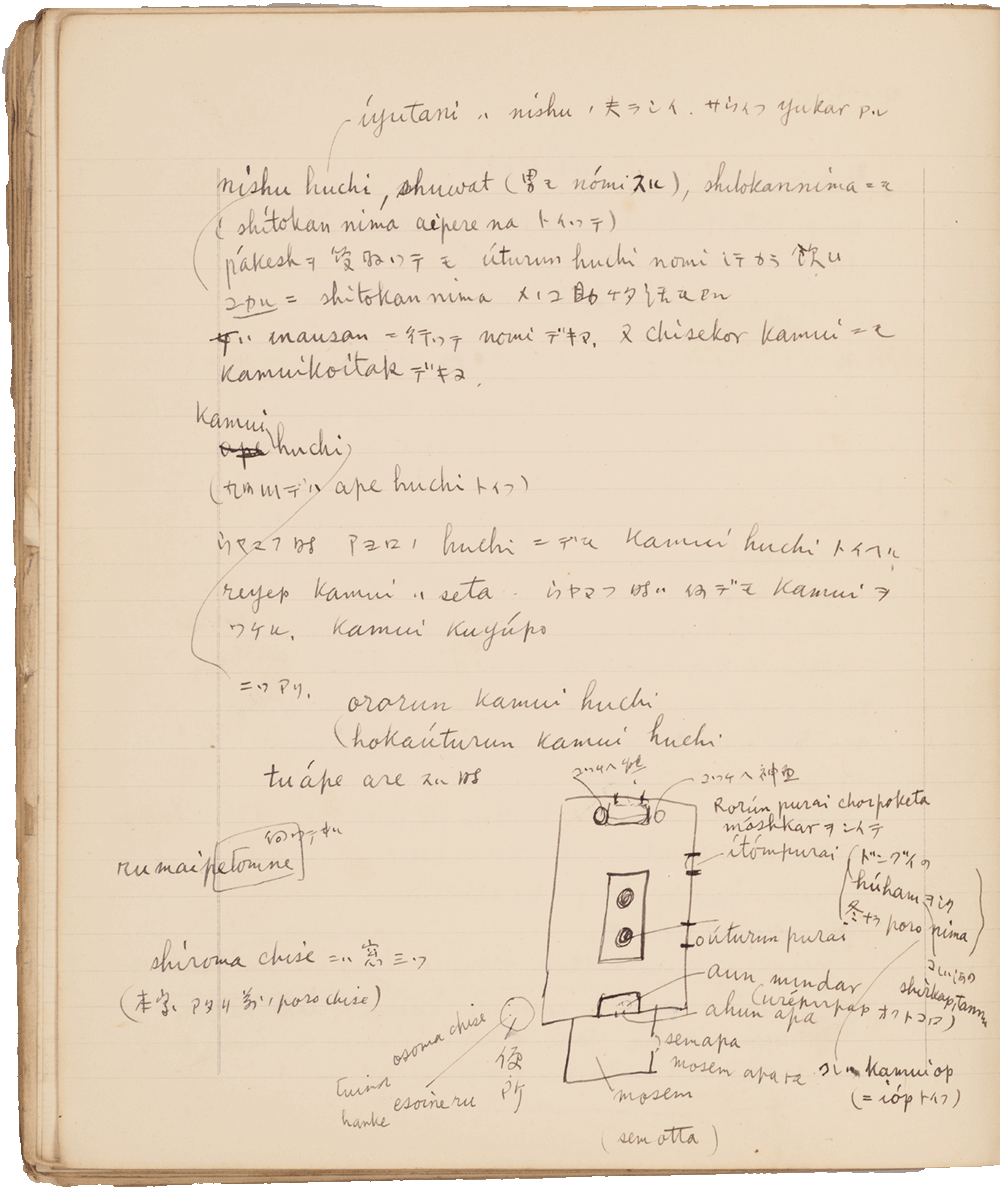
Chapter 3 Laying the foundations for Ainu language research with experts in Karafuto (Sakhalin) and Hokkaido
Dropping out of Graduate School, Chiri moved to Karafuto in 1940 to take up a position as a teacher at an all-girls school. He also served as a part-time technician at the Karafuto Agency Museum. Here he met numerous experts in many fields and carried out collaborative research. The research surveys he carried out at this time would lead him to a research style that was not limited to linguistics alone, and which he later adopted after returning to Noboribetsu in 1943. A major achievement of Chiri’s at this time was his Studies in Ainu Grammar – With an emphasis on the Karafuto Dialect, which became his major dissertation when he was awarded his Doctorate from Hokkaido University in 1954.
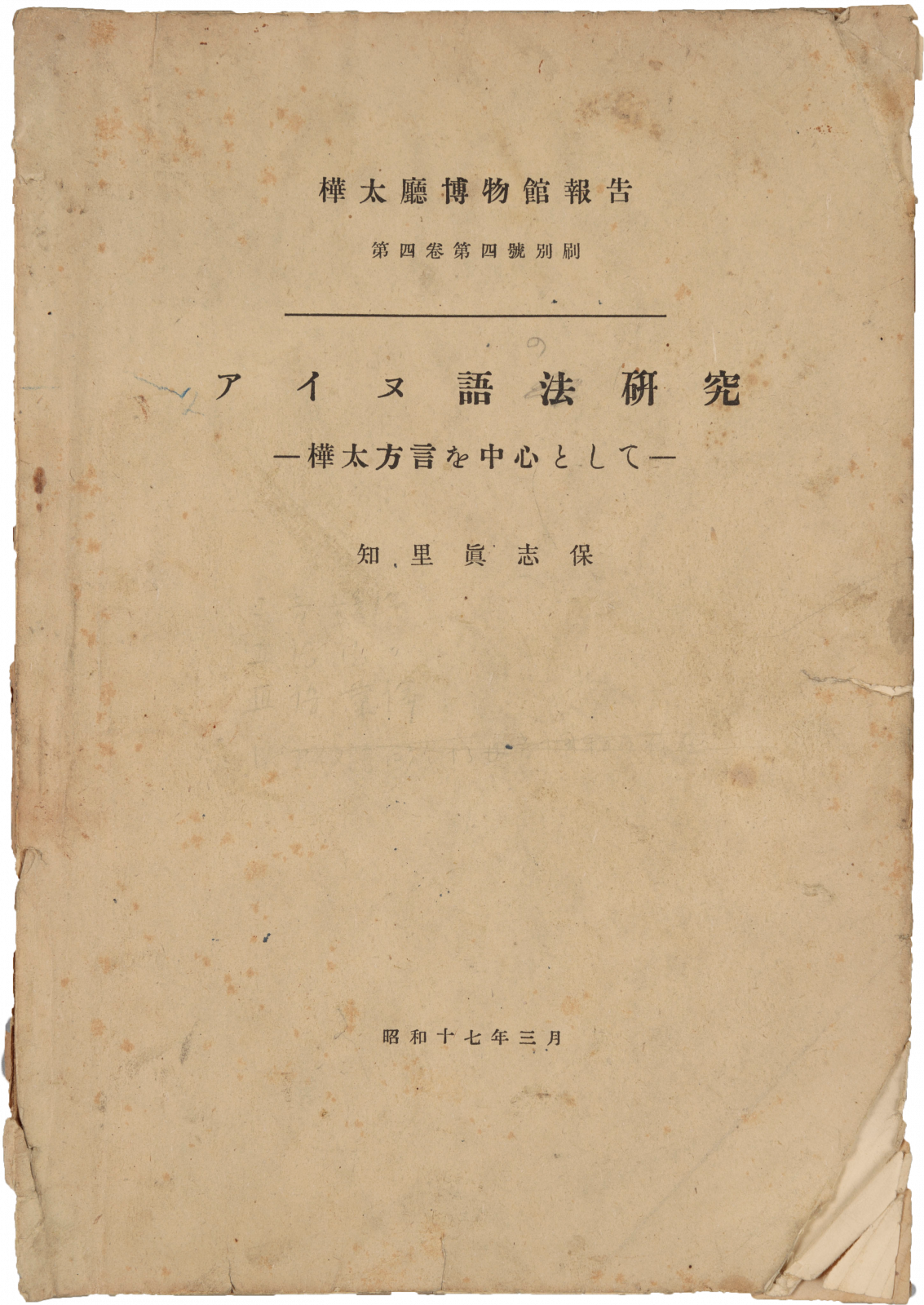
Chapter 4 Surveys across Hokkaido and dictionary editing
With the support of his benefactor, Shibusawa Keizō, Chiri gained a position at Hokkaido University, and he moved from Noboribetsu to Sapporo in 1950, when he became a university lecturer. Alongside the scholars, Takakura Shinichirō, Kōno Hiromichi, and Sarashina Genzō, Chiri became involved in the editing of local government histories. With Yamada Hidezō, he carried out collaborative surveys on Ainu place names and published an introductory text and dictionary of them. It is during this period that he also proposed an ambitious project for an Ainu cultural history. He published two volumes of his lifework, A Classified Dictionary of the Ainu Language, and died in 1961 from a heart disease.
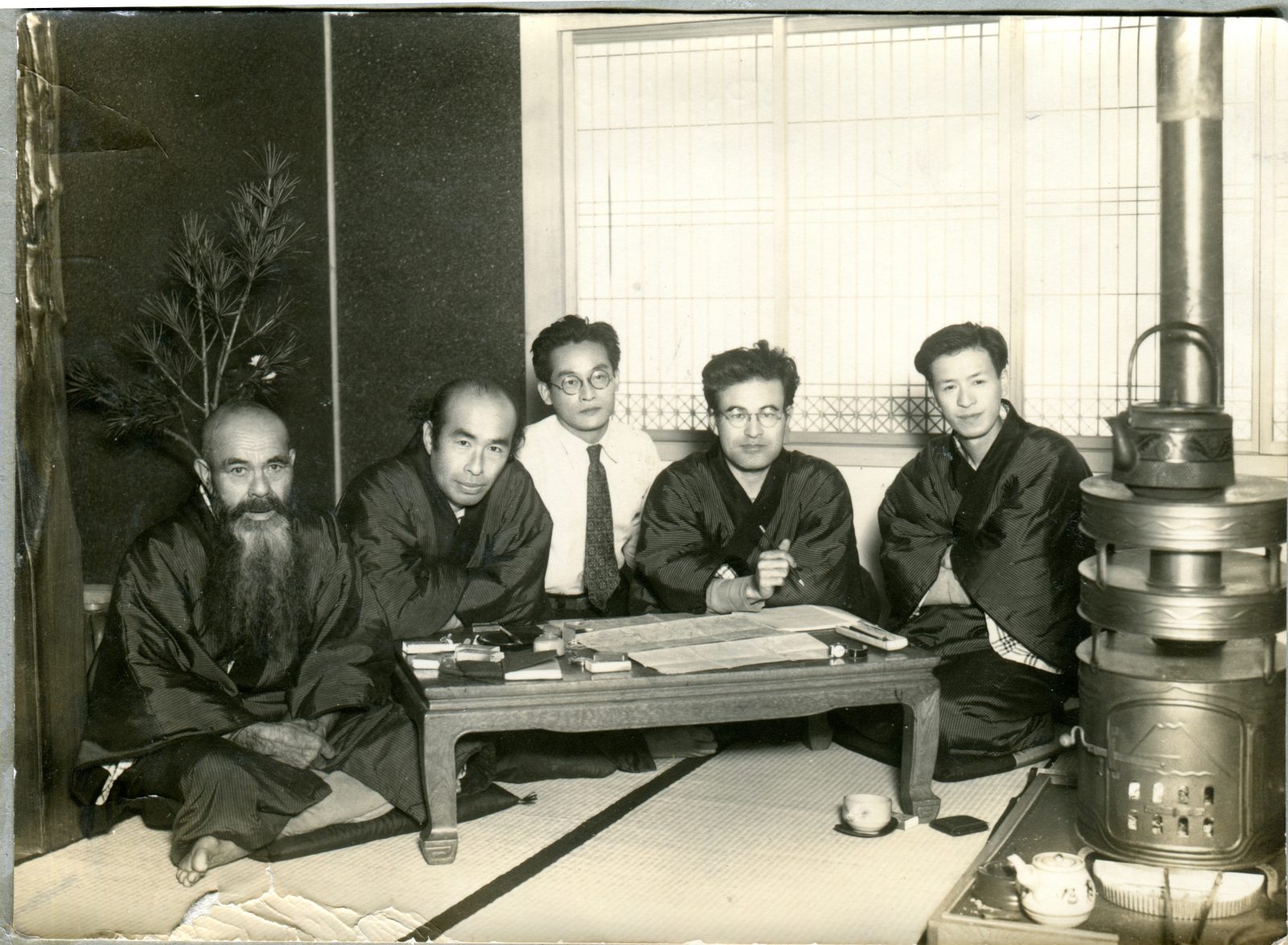
Chapter 5 Chiri Mashiho portrayed by his Utari – The passionate feelings of his fellow Ainu
Chiri’s life was one full of encounters. He met many important figures in Ainu history and culture – from those from whom he learned the Ainu language when he was a student, to those who came to him with an adoration for his work. Chiri can also be found at important turning points in Ainu history. When petitioners from the Chikabumi land dispute travelled to Tokyo, when revisions to the Hokkaido Former Aborigines Protection Act passed the Imperial Diet, and when the Ainu Association of Hokkaido was founded, Chiri was there.
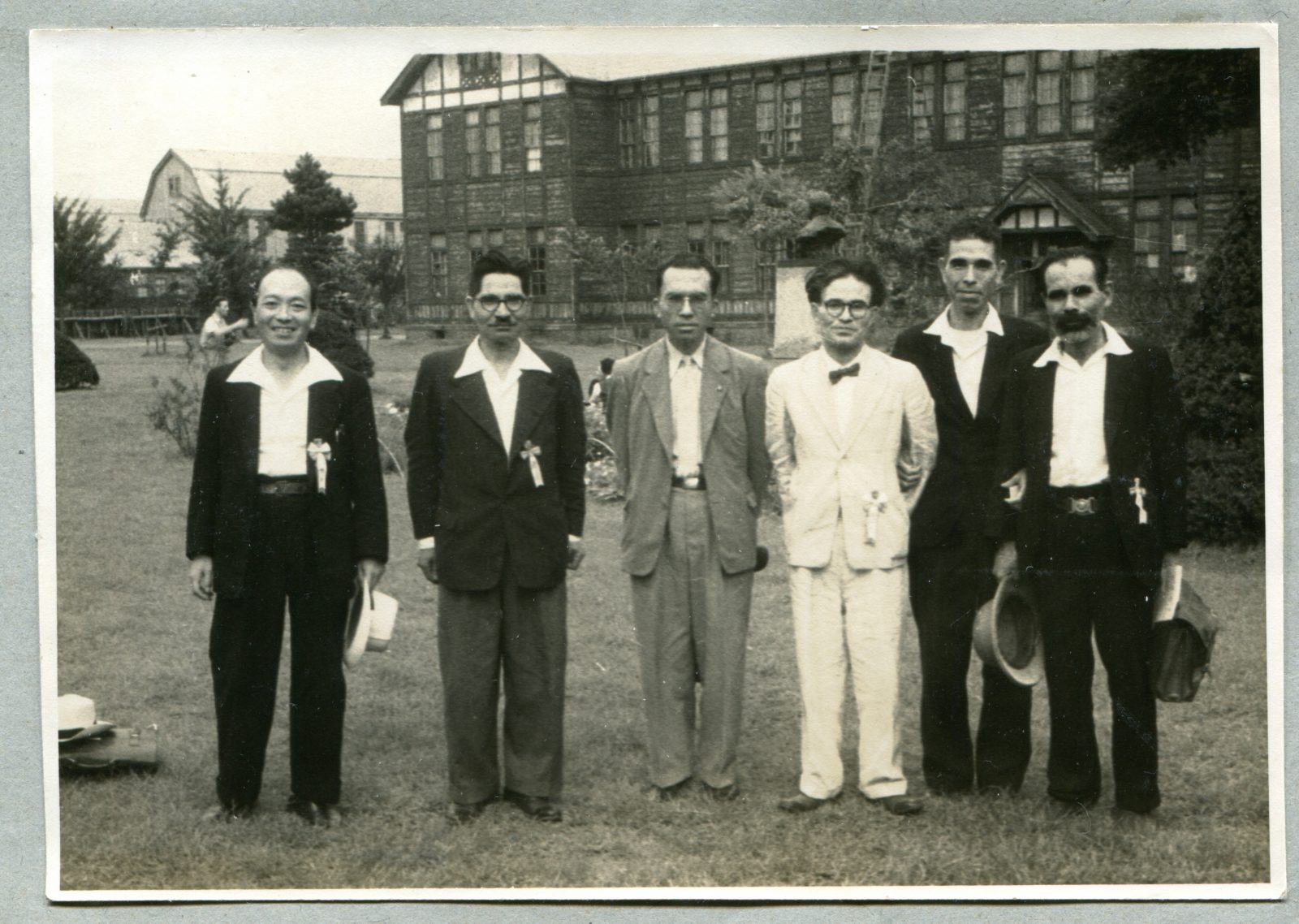
Noboribetsu City Historical Museum
Chapter 6 AYNU ITAK – Let’s study Ainu language with Professor Chiri! –
AYNU ITAK is a corner where you can enjoy learning Ainu language. You can experience Ainu language quizzes and games based on Ainu language research by Professor Chiri. It can also be used as a photo spot to commemorate your visit.
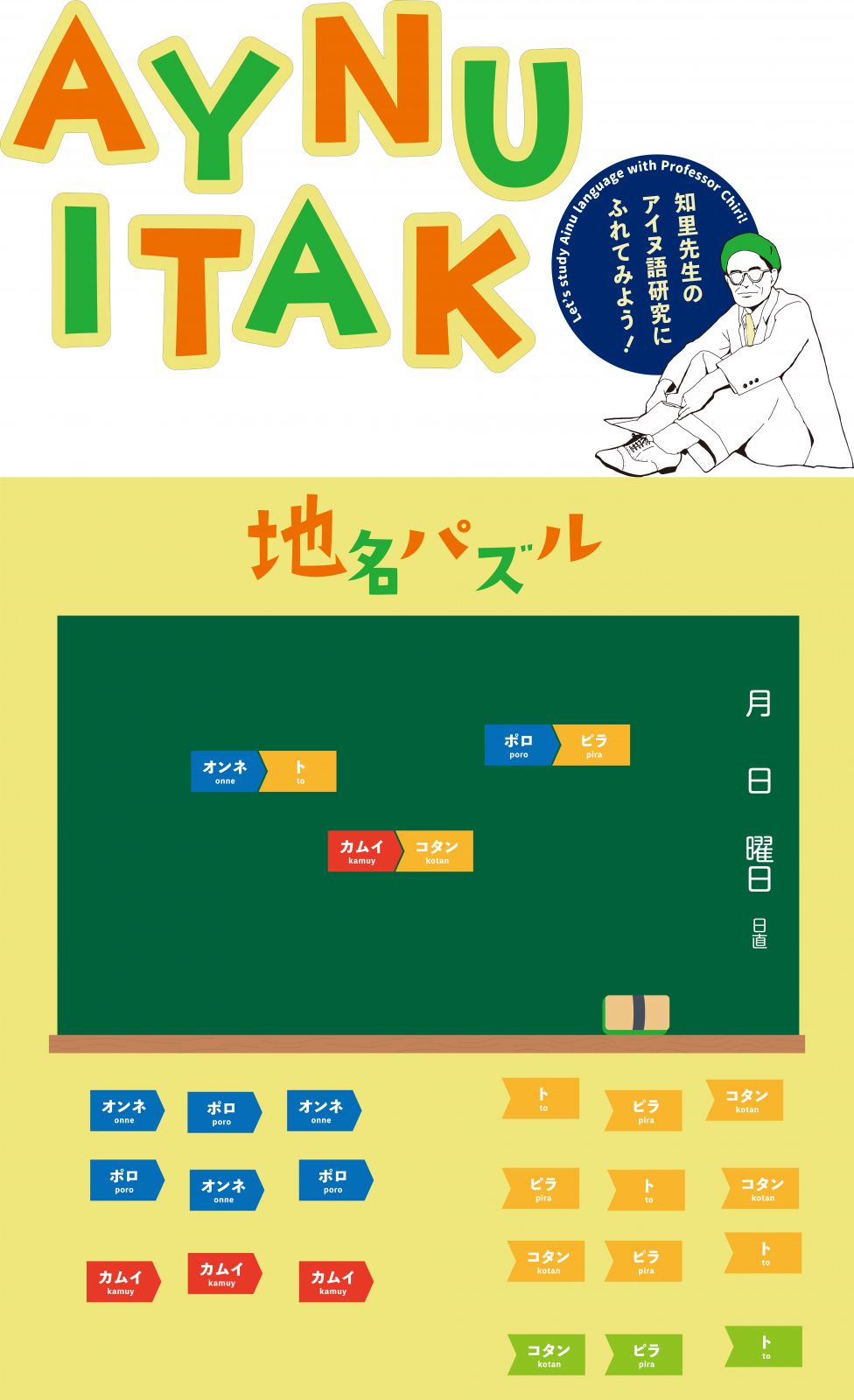
Ainu language place name puzzle
Original Goods
The signature stamp used by Chiri Mashiho to mark his books – his “Chiri Stamp” – has become an exclusive zip bag and mug cup souvenir to commemorate the exhibition! Other handy items will be available in the Museum Shop too!
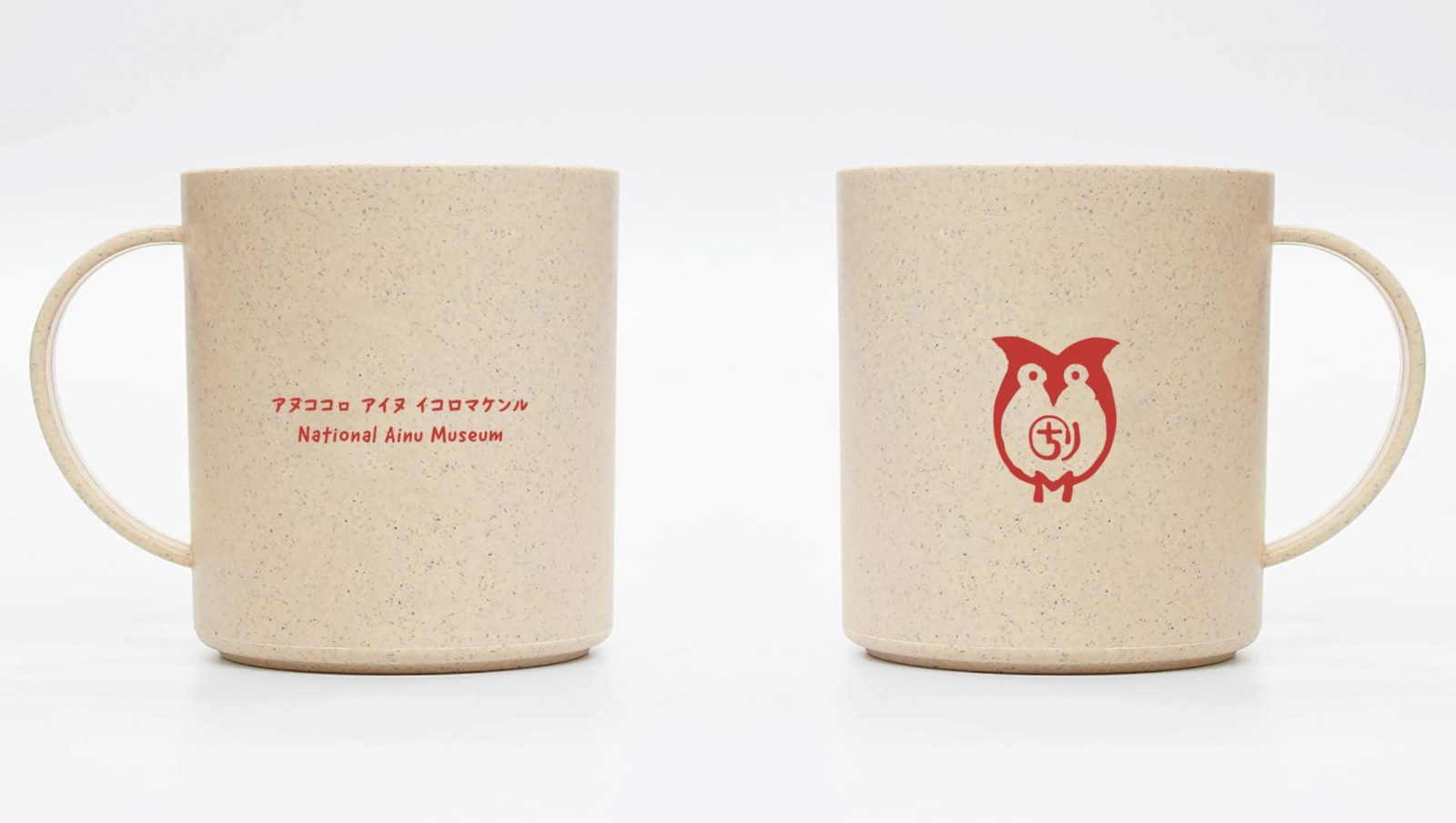
“Chiri Stamp” Mug Cup 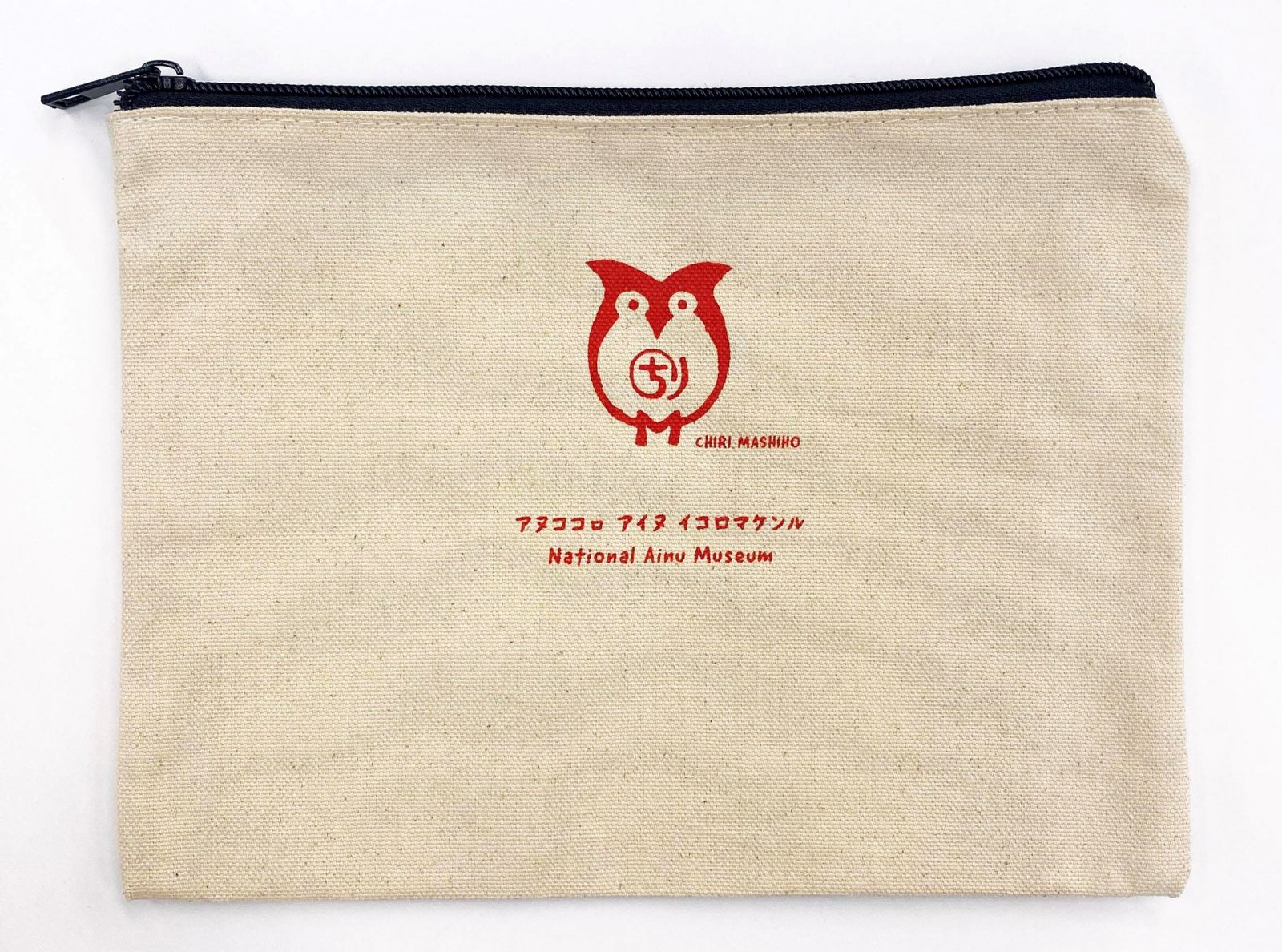
“Chiri Stamp” Zip Bag

